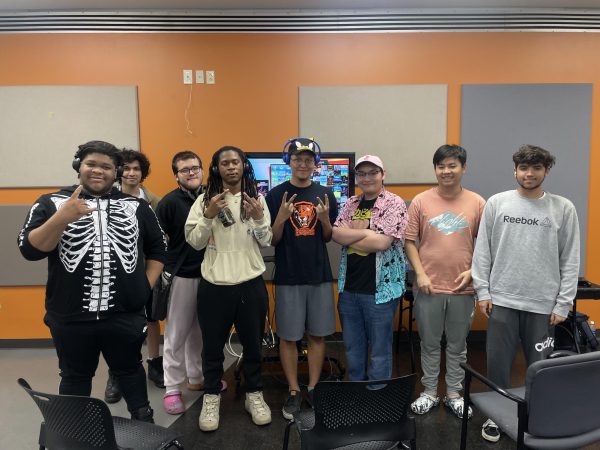Animal specialist shares experience from Africa with campus
Imagine driving down an unfamiliar road on a wide-open landscape. Seeing a caravan of dog-like animals coming toward you in the distance, you slow down to get a better look. A pack of painted wolves, a rare sight, approach your party.
For Rick Lampe, a badger specialist and professor of biology at Buena Vista University, this was a reality on one of his zoological excursions to South Africa.
Lampe gave a presentation on his adventures during Bengal Pause on Thursday in Ketchum Hall. Lampe was accompanied by some of his students on some very well regimented tours where they discovered South African history and biodiversity.
Lampe recounted how much wildlife there was to see while driving down the roads in what is referred to as “thorn bush country.”
“We went out early,” Lampe said. “We stayed in a camp where the gates opened at 6 o’clock.”
He and his students got in their van and went for a drive.
Because of all the obstacles, like thorn bushes, the painted wolves, or wild dogs, “the dogs use the roads,” Lampe said.
Since Lampe’s Ph.D is in badgers, he had a lot to say about the honey badger, which has quite a different way of life compared to badgers in North America.
“The honey badger gets its name from eating honey, and tearing apart the honey trees,” Lampe said. “There is a little bird called the honey guide that has the behavior of searching for honey badgers, and it will lead a honey badger to a hive.”
After the honey badger rips apart the tree, and eats the honey, the honey guide gets the wax — “A really neat, mutualistic relationship,” Lampe said.
One of the most passionate stories in his presentation shed light on the current situation facing the rhinoceros species.
Lampe reported that in the first seven months of this year, 536 rhinos have been poached for their horns, a material valued more than gold on Asian medical markets.
Per pound, a rhino horn can be sold for as much as $30,000.
On his journeys, Lampe saw that these animals were even being poached in conservatories. He shared a few insights on possible ways to reduce the killing of rhinos.
“Here is one possible solution,” Lampe said. “If you allow a rhinoceros throughout its life to ordinarily grow its horn, it can produce 120 pounds of horn. The poachers don’t take the time to do that. They simply come in, shoot the animal, saw off the horn, and they’re gone.”
Besides farming the animals, which Lampe said is very controversial, he suggested that the store of 30 tons of confiscated horns be slowly released to dampen the market.
Lampe’s main complaint is that, since Rhino horns are made of the same material as hair and fingernails, these creatures are being killed in vain. He joked that someone should find a way to take human hair, and mold it into the shape of a horn because there would be no difference.
Lampe will be retiring later this year. He was not completely sure if he would make another trip to South Africa with students, but he entertains the possibility.
Andrew Manzella can be reached by email at [email protected] or on twitter @andrewmanzella.








